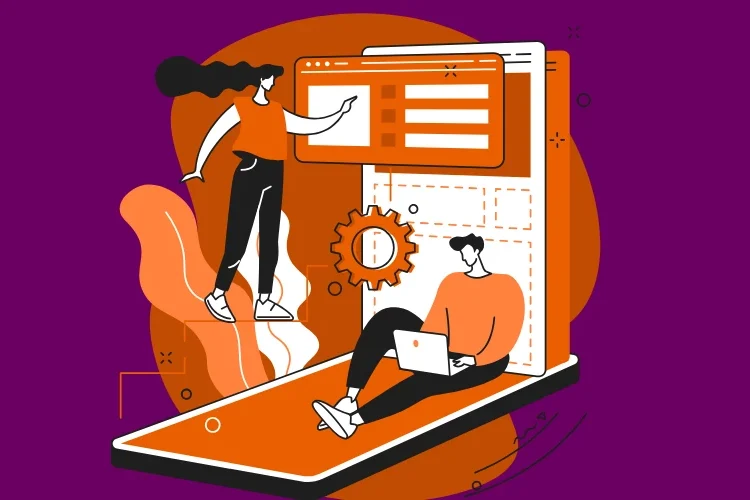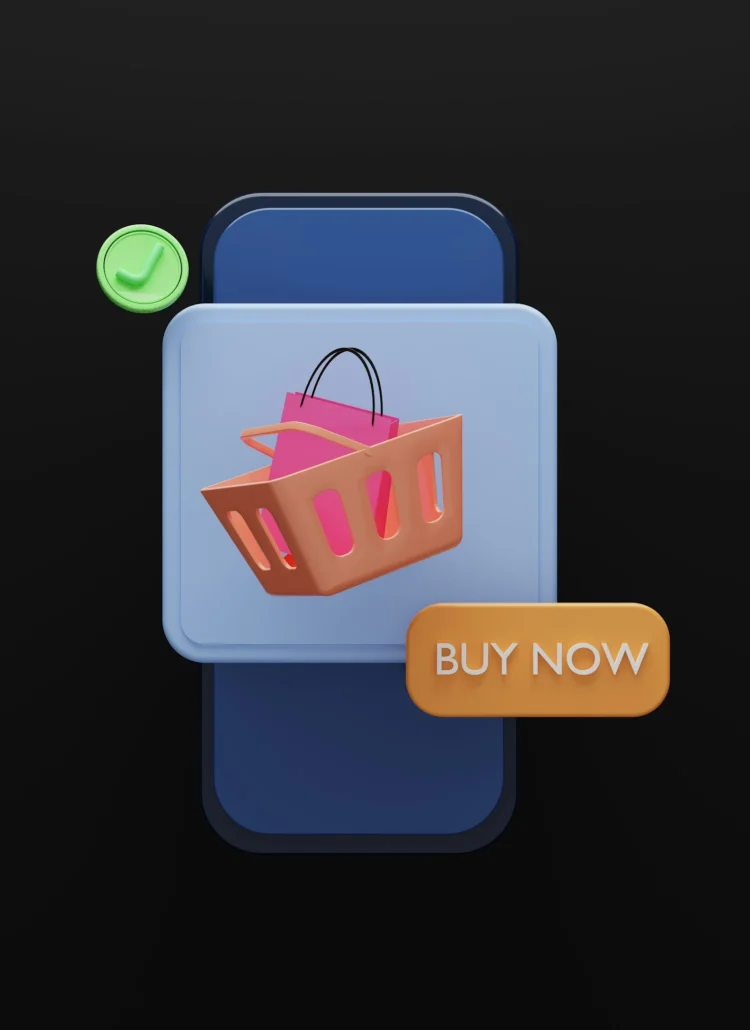Email marketing automation is transforming how businesses connect with their audiences, enabling personalized messages to be sent at the perfect time. It’s a must-have strategy for simplifying processes, saving time, and boosting ROI. In this guide, we explore 13 powerful marketing automation examples, providing practical insights to elevate your marketing efforts and drive results.

Table of contents
What is Email Automation and How Does It Work?
Email automation allows you to send targeted messages to specific audiences without manual effort, using pre-set triggers like user behavior, time intervals, or specific actions. It’s like having a marketing assistant that never sleeps! With automation, you can improve customer experience, nurture leads, and increase sales while freeing up time for other business priorities.
Why It Matters:
- Efficiency: Save time by automating repetitive tasks.
- Personalization: Send messages that resonate with your audience.
- Higher ROI: Automated emails generate 320% more revenue than non-automated campaigns.
Now, let’s explore 13 practical and effective applications of email automation that can take your business to the next level.

A List of the Best Email Marketing Automation Examples
Email marketing automation is a game-changing tool that elevates how you connect with your audience and manage campaigns. By exploring email marketing automation examples and implementing these strategies, you can simplify your marketing processes while fostering genuine connections that deliver impactful results.
1. Welcome Series Emails
Welcome series emails are a set of messages sent to new subscribers to introduce your brand. They provide a warm greeting and help build a relationship with your audience. By using these emails, you can share key information about your business, products, and services. They’re one of the best marketing automation examples to connect with your audience effectively.
Why They Work?
Welcome emails are crucial for creating a great first impression and building trust with your customers. They help you introduce your brand, showcase key benefits, and highlight your identity. As a result, customers better understand what you offer. By sharing engaging and relevant content, you lay the groundwork for long-term loyalty.
Pro Tip:
- Use a three-part welcome flow to make your email series more effective.
- First, introduce your brand and share its story to connect with your audience.
- Then, in the second email, highlight the unique benefits of your products or services to show their value.
- Finally, in the third email, include customer testimonials or success stories. This adds social proof and builds trust with your audience.
This approach is one of the most effective marketing automation examples, creating a smoother flow and keeping readers engaged at every step.
2. Re-engagement Emails
Re-engagement emails, or win-back emails, are a great marketing automation example designed to reawaken inactive subscribers. These emails aim to reconnect with customers or subscribers who haven’t interacted with your brand recently. By using targeted messaging, they help bring back lapsed users and rebuild engagement.
Why They Work?
Re-engagement emails are effective because they remind your audience of the value your brand provides. For instance, you can offer personalized incentives or exclusive discounts to capture their attention. Highlighting new products or services is another way to spark interest and encourage reengagement.
Pro Tip:
- Segment your audience based on the different segmentation groups and previous engagement levels. This ensures more relevant and personalized reengagement emails.
- For example, offer a special incentive or message tailored to their specific interests or needs.
This marketing automation example demonstrates how valuing your relationship with subscribers and understanding their preferences can boost your chances of winning them back, while also building a stronger, long-lasting connection.

3. Abandoned Cart Emails
Abandoned cart emails are a perfect example of marketing automation in action. These emails are sent to customers who add items to their cart but don’t complete their purchase, serving as a reminder to return and finish buying.
Why They Work?
Abandoned cart emails recover lost revenue by using timely, personalized reminders to re-engage customers. They gently nudge customers to complete their purchase while addressing any concerns or hesitations. As one of the most effective marketing automation examples, these emails can significantly boost sales and improve customer conversions.
Pro Tip:
Maximize the impact of your abandoned cart emails with these strategies:
- Create urgency by using phrases like “Your cart is waiting, but only for 24 hours!”
- Offer a limited-time discount to motivate quick action.
- Personalize the email with product images to remind customers of what they left behind.
- Include a clear call-to-action button for an easy return to checkout.
By leveraging urgency, personalization, and simplicity, you can guide customers back to their carts and see why abandoned cart emails are a standout among marketing automation examples.
4. Thank-You Emails
Thank-you emails are simple messages sent to customers after they make a purchase or sign up. They show genuine appreciation for their support and help build a personal connection with the customer.
Why They Work?
Thank-you emails are a classic example of marketing automation examples that drive customer loyalty. By showing gratitude, they reinforce the customer’s decision to choose your business. Customers feel appreciated and valued, which helps build a positive relationship. Over time, this encourages repeat purchases and strengthens trust.
Pro Tip:
To make your thank-you emails even more effective, try adding a referral link. Here’s why this marketing automation example works:
- Encourage sharing: A referral link motivates happy customers to recommend your business to others.
- Boost word-of-mouth marketing: Satisfied customers can spread the word, bringing in new customers naturally.
- Show appreciation: Including a referral link demonstrates gratitude while turning your customers into advocates.
By combining thank-you emails with referral links, you’re leveraging one of the easiest and most impactful marketing automation examples to grow your brand!

5. Instructional Emails
Instructional emails are messages that guide customers step-by-step on how to use a product or service. They aim to educate users about important features, functionalities, and best practices. As a result, these emails help users get the most out of their purchase.
Why They Work?
Instructional emails work well for product onboarding and service-based businesses. They provide clear steps, so customers can confidently complete setup processes. Moreover, these emails offer expert tips that help customers understand how to use a product or service effectively. This is one of many marketing automation examples that can improve customer engagement and retention.
As a result, they reduce frustration and remove common barriers to usage. Therefore, incorporating instructional emails can lead to a smoother customer experience and better satisfaction overall.
Pro Tip:
To make instructional emails more engaging and easy to follow, try using tutorial videos. Adding visual demonstrations can:
- Improve understanding, as customers can see exactly how something is done.
- Help customers grasp the information more quickly and effectively.
In addition, videos are a great way to hold attention, especially when the content is complex. This is another effective marketing automation example that ensures your emails are both actionable and user-friendly.
6. Product Review Requests
Product review request emails are great marketing automation examples that help businesses gather customer feedback. These automated messages politely ask customers to leave a review on the company’s website or other platforms after a purchase.
Why They Work?
Product review requests build trust and credibility for your brand by showcasing positive customer experiences, creating social proof. This makes it easier for potential customers to trust your business and make confident purchase decisions. Encouraging feedback is a simple yet effective way to grow your brand.
Pro Tip:
Boost review rates by offering small incentives, such as:
- Discounts on future purchases
- Entry into a giveaway
This strategy not only increases engagement but also strengthens customer relationships and provides valuable insights to improve your services. For businesses looking for effective marketing automation examples, product review requests are a must.

7. Replenishment Reminders
Replenishment reminder emails are a great example of marketing automation examples that help customers restock their consumable products effortlessly. These automated messages ensure customers never run out of their favorite items.
Why They Work?
Replenishment reminders are effective because they anticipate customer needs and provide timely prompts to reorder. This proactive approach not only improves the customer experience but also builds trust and enhances customer retention over time.
Pro Tip:
- Add a one-click reorder button to your email to simplify the purchasing process.
- This reduces hassle for customers, encourages repeat purchases, and improves their overall shopping experience.
8. Back-in-Stock Notifications
Back-in-Stock Notification Emails are a prime example of marketing automation examples that drive results. These automated messages notify customers when an out-of-stock item becomes available again, ensuring they don’t miss out.
Why They Work?
Back-in-Stock Notification Emails are a powerful way to boost sales and meet customer demand. By informing customers when popular items are restocked, these emails create urgency and exclusivity. Customers feel valued, which improves their experience and builds loyalty to your brand.
Pro Tip:
To maximize conversions, add urgency to your emails with these techniques:
- Countdown timer: Show how much time is left before the offer ends.
- Set up a Low-stock indicator: Inform customers when items are almost sold out, prompting quick action.
As one of the best marketing automation examples, Back-in-Stock Notification Emails encourage faster purchases and help your business stay ahead.

9. Birthday Emails
Birthday emails are a great example of marketing automation examples that help brands create stronger connections with their customers. These automated messages celebrate a customer’s special day and often include exclusive discounts, freebies, or special treats to show appreciation.
Why Do They Work?
Everyone loves attention on their birthday, and sending a personalized email demonstrates that you value your customers as individuals. This creates a positive emotional experience, builds goodwill, and strengthens their loyalty to your brand. It can also increase the likelihood of repeat purchases, making it a win-win for both you and your customers.
Pro Tip:
- Make the birthday offer exclusive to their birthday month to create urgency.
- This encourages customers to redeem the special offer within a limited time, driving more conversions.
- Not only does this approach add excitement to their birthday, but it also makes the celebration more memorable.
By leveraging marketing automation examples like birthday emails and adding limited-time offers with a personal touch, you can effectively boost engagement, loyalty, and sales.
10. Lead Nurturing Sequences
Lead nurturing sequences are automated email series that build relationships with potential customers. They guide leads step by step through the buyer’s journey. By providing relevant and valuable content, these emails keep leads interested and help them move closer to making a purchase.
Why It Works?
Lead nurturing sequences are a great marketing automation example that helps businesses build trust and engage with leads over time. By sharing helpful content like product demos or case studies, businesses can educate leads and keep their brand top of mind. This approach ensures businesses stay connected with potential customers, improving the chances of conversion and effectively guiding leads through the sales journey.
Pro Tip:
- Segment your leads based on their behavior and interests.
- This ensures they receive personalized content tailored to their specific needs and preferences.
- It’s another excellent marketing automation example that increases engagement and boosts conversion rates.
Using tailored strategies helps create a stronger connection with your audience, ultimately leading to better results.

11. Customer Survey Emails
Customer survey emails are a simple way to collect feedback from your customers and are great marketing automation examples. Typically sent after a purchase or service interaction, these emails show customers that their opinions and experiences matter to you.
Why It Works
Customer survey emails serve several key purposes:
- Collecting Valuable Insights: These emails give customers a voice, enabling them to share feedback, suggestions, and concerns. This helps you better understand their needs and expectations.
- Boosting Customer Engagement: Inviting customers to participate in surveys fosters a sense of connection and involvement, strengthening their bond with your brand.
- Enhancing Products and Services: The feedback gathered highlights areas for improvement, allowing you to refine your offerings and better align them with customer needs.
Pro Tip:
Keep surveys short and simple by limiting them to 3-5 questions. This keeps participants engaged and improves response rates. Additionally, explain how their feedback will help them—for example, leading to better products, personalized recommendations, or an improved experience. By doing so, participants feel valued and are more likely to provide honest input.
Customer survey emails are one of many marketing automation examples that not only streamline feedback collection but also strengthen relationships with customers and enhance your business strategies.
12. Follow-Up Sale Emails
Follow-up sale emails are a perfect example of effective marketing automation examples. These emails are sent after a transaction is completed to thank customers for their purchase and show appreciation. More importantly, they provide an opportunity to build loyalty and keep customers engaged.
Why It Works?
- Building Loyalty: Follow-up sale emails show customers you value their support, fostering loyalty and appreciation.
- Encouraging Engagement: Highlighting your loyalty or rewards program motivates customers to stay connected and benefit from ongoing interactions.
- Generating Repeat Business: These emails remind customers of your products or services, encouraging future purchases.
- Establishing Personal Connections: Personalizing recommendations based on purchase history makes customers feel understood and valued.
Pro Tip:
- Personalize your follow-up emails by suggesting related products or seasonal items.
- Ensure your suggestions align with the customer’s preferences and interests to make them more relevant and appealing.
- This personalized approach increases engagement and strengthens customer relationships.
By leveraging follow-up sale emails as part of your marketing automation examples, you can create deeper connections with your audience and drive repeat business.
13. Cross-Sell and Upsell Emails
- Cross-Sell Emails: Cross-selling means suggesting products that complement what customers already bought. For example, you might recommend items that enhance their experience or provide extra value. This helps customers discover useful products they didn’t know they needed.
- Upsell Emails: Upselling is about promoting a better or premium version of a product customers already purchased or showed interest in. For instance, you could highlight the added features or benefits of the upgraded version.
Why It Works?
Cross-sell and upsell emails structures are powerful marketing automation examples because they leverage the customer’s current interest and intent to buy. By suggesting related or upgraded products, you can boost both the average order value and customer lifetime value.
Additionally, these emails offer a personalized and convenient shopping experience by helping customers find relevant items or better options without extensive searching. This makes their decision-making process faster, easier, and more enjoyable.
Pro Tip:
To make cross-sell and upsell offers more effective, focus on the unique benefits the recommended products provide. Clearly explain how these additional choices solve the customer’s needs or improve their experience.

Tried-and-True Tools for Email Marketing Automation Examples
To make all this happen, you’ll need a reliable email automation platform. Here are some top marketing automation examples:
- Klaviyo: Perfect for ecommerce and segmentation.
- Omnisend: Excellent for multi-channel campaigns.
- Mailchimp: User-friendly and great for beginners.
- ActiveCampaign: Best for CRM integrations.
- Keap: Ideal for small businesses.
- HubSpot: Great analytics and marketing bundles.
- ConvertKit: Excellent for content creators and bloggers.
When evaluating your options, focus on features like integration capabilities, segmentation, and reporting tools to ensure the platform meets your business needs.
Conclusion: Email Marketing Automation Examples
Email marketing automation isn’t just a nice-to-have—it’s a game-changer for businesses looking to enhance customer experience and increase ROI. From re-engaging inactive visitors to nurturing future purchases, automated emails ensure that no opportunity is overlooked.
Looking for marketing automation examples to get started? Try implementing one or two strategies above and watch how they transform your business results. Want to amplify your impact? Choose an automation tool from the options listed and see the benefits for yourself. Your audience—and your bottom line—will thank you!






Leave a Reply